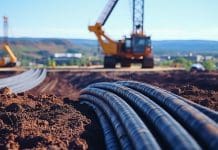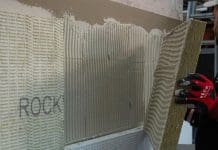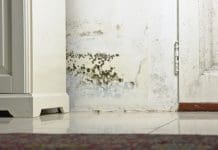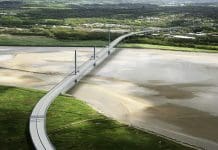Paul Beech, General Manager of Armatherm, discusses the importance of structural thermal breaks within construction projects, and how savings can be made by investing in a thermal bridging solution, as well as reducing the likelihood of serious issues associated with condensation and damp
At present, most commercial buildings are designed with a flat roof to offer additional space for equipment and cladding for protection and insulation.
On one hand, these offer benefits to the buildings, but on the other, if they’re insufficiently isolated, the energy transfer can be detrimental to the energy performance, resulting in regulations not being met.
To give a brief introduction to thermal bridges, it’s a term given to incorrectly isolated connections where a material penetrates the building envelope – either through the floor, wall or ceiling.
These connections are where heat can easily transfer through the envelope, which can cause detrimental issues surrounding energy loss and condensation – both of which can be the catalyst for costly renovation projects.
What is thermal bridging?
Thermal bridges are highly conductive structural elements that create heat transfer between the exterior and interior of a building’s thermal envelope. A key example where this can be found is with on-roof equipment.
Systems such as wind posts, solar panels and HVAC systems require attachment fixtures which, when improperly isolated, can cause thermal bridging issues.
In an industry renowned for its innovation and dedication to achieving energy-efficient solutions, the importance of thermal breaks should be acknowledged.
Although we have begun to see thermal bridging issues starting to be highlighted and recognised, it’s common for structural thermal breaks to still be an afterthought or overlooked, resulting in a less effective break being used.
This is especially frequent when high compressive strength materials are specified in locations that do not require it, so thermal efficiency is sacrificed for unnecessary compressive strength. Whereas in situations where tension occurs, the compressive strength needs to be considered and calculated.
How does Armatherm’s thermal break solutions work?
When it comes to the installation of Armatherm thermal break solutions, they can be incorporated anywhere that a transition exists within a building’s envelope.
They work by isolating temperatures, with the ultra-high density ensuring that while insulating, the materials are strong with low water absorption properties. Allowing cold temperatures to transfer encourages condensation, which can lead to mould and subsequent health issues for residents.
This is often seen on ceilings where equipment has been installed, or on the interior walls that feature balconies or cladded facades that haven’t been correctly isolated. Up to 60% energy savings can be achieved through isolating roofs properly It has been found that energy savings of up to 60% can be achieved by isolating roofs properly, alongside the benefit of removing the potential for condensation to develop.
Condensation promotes the growth of fungi and bacteria on surfaces, compromising indoor air quality.
In damp environments, mould releases airborne spores that can trigger respiratory issues, allergies and worsen asthma symptoms. Prolonged exposure may lead to chronic health conditions.
Additionally, mould weakens building structures by corroding materials and causing decay.
Structural damage can result in costly repairs and compromises the integrity of homes and buildings. Addressing these issues promptly through proper ventilation, insulation and moisture control is crucial to safeguard both human health and the longevity of structures.
Without implementing effective measures to decrease energy transfer, the industry as a whole will struggle to fulfil its obligation to developing more sustainable practices and create a rise in energy bills as a result. With structural thermal breaks being versatile enough to be included within almost any transition within the building envelope, it’s an accessible, worthwhile and highly beneficial solution that should not be overlooked.
Armatherm has over 50 years’ experience in thermal break solutions
Armatherm has more than 50 years’ experience in designing, manufacturing and supplying innovative thermal break solutions to commercial construction projects.
With teams across the globe, we can provide comprehensive solutions to modern day engineering problems to help achieve efficiency statistics to meet regulations and protect the future of the construction industry.
Many building codes and energy efficiency standards benefit from the incorporation of structural thermal breaks to meet specific insulation and performance criteria.
In the battle to meet net zero by 2050, these issues are more important to address than ever. A net zero building is a building that has no net carbon emissions during its construction and operation, creating difficult goals to achieve for the building industry.
40% of the UK’s carbon emissions come from buildings Currently, 40% of the UK’s carbon emissions come from buildings, so it’s imperative that efficient and effective solutions are implemented here and now.
Overall, the importance of creating thermally isolated buildings to reduce costs both in terms of energy and potentially expensive renovation projects, simply cannot be overlooked.
Protecting structures designed by architects from being demolished or declared unlawful is a huge part of the industry that needs to be focused on ahead of these changes. Making this information widely accessible to those who need it is the first step in creating a more reliable and efficient future for the construction world as regulations become tighter.
Paul Beech
General Manager
Armatherm
www.armatherm.co.uk/contact-us/
*Please note: This is a commercial profile.














